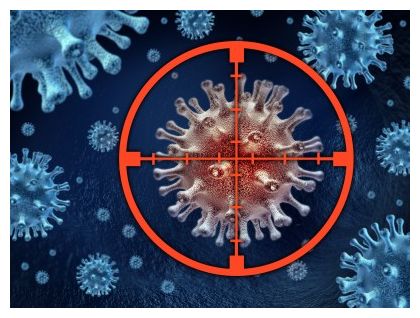
© GreenMedInfo
Cancer is the second leading cause of death in the developed world, and yet we are still in the dark ages when it comes to treating and understanding it.
The
colossal failure of conventional cancer treatments reflects a fundamental misunderstanding of what cancer - the "enemy" - actually is. For one,
chemotherapy and
radiotherapy are both intrinsically carcinogenic treatments. The only justification for their use, in fact, is that they are highly effective at damaging the DNA within cells - with the hope that the cancer cells will be more susceptible to being harmed than the healthy ones. The reality, however, is that the "collateral damage" from treatment is inevitable; it is not a matter of "if," but to what degree the damaging side effects will occur. As in real modern warfare, the decision to strike is often based on deciding how much collateral damage to "civilian" populations is deemed acceptable. This is not unlike the fixation in toxicological risk assessments for drugs, environmental pollutants, food additives, etc., where determining "an acceptable level of harm" (is that not oxymoronic?) to the exposed population is the first order of business.
The DNA-damaging, or genotoxic effects of chemotherapy and radiotherapy, according to the prevailing wisdom, are the #1 cause of cancer initiation and promotion. This is known as the "Mutational Theory" of cancer, and has been the dominant explanation for half a century. Therefore it is absolutely disconcerting that the standard of care in cancer treatment today is still the use of genotoxic agents versus substances that are able to selectively harm the "bad" cells, leaving the "good" ones intact; which is also known as "
selective cytotoxicty," and is a property characteristic of natural anti-cancer compounds and whole plant extracts. Nowhere is this more clearly demonstrated than in the case of fruit-derived compounds, such as graviola, where research indicates that it may be
up to 10,000 times more effective at killing certain cancer cells versus adriamycin -- not so affectionately named the "red devil" for its lethal side effects -- and is highly selective in which cells it kills.
Take the cancer drug tamoxifen, for example. It is classified by the World Health Organization and the American Cancer Society as a human carcinogen, and can cause over
two dozen health-destroying side effects, and yet it is still being used as a first line treatment for certain types of breast cancer. Does that really make sense? Even if
tamoxifen was effective (which increasingly it is not), does it really matter if it "cures" breast cancer only to cause endometrial or liver cancer (which is often far more deadly than breast cancer) as a direct result of the treatment? Tamoxifen and chemotherapy resistance is increasingly a problem. In the same way that certain pathogenic bacteria become resistant to antibiotics - even becoming stronger after being challenged with them - drug resistance and multi-drug resistance to chemoagents is the canary in the coal mine, indicating the entire paradigm,
hinged as it is on patented, highly toxic chemicals, is rearing to collapse.

Comment: The following articles present interesting information about Why Skeptics Love to Hate Homeopathy: